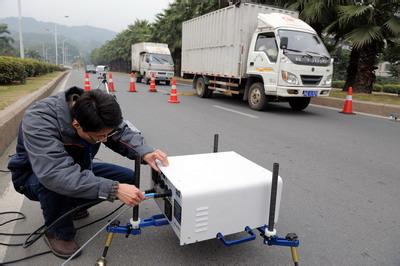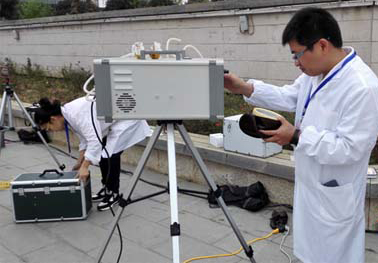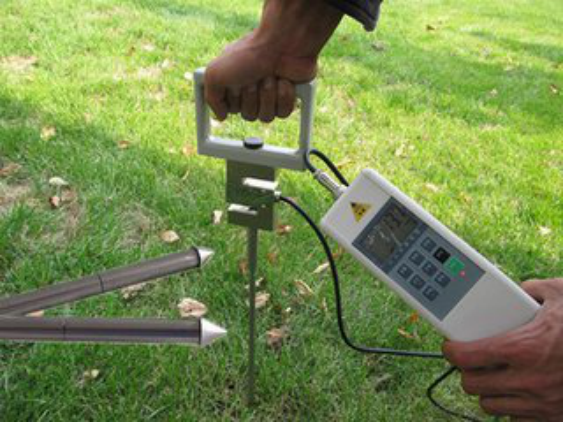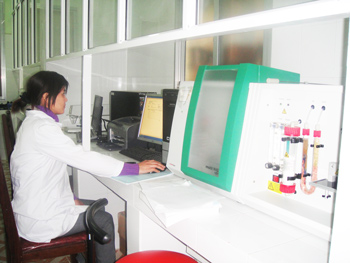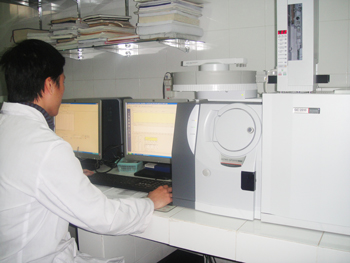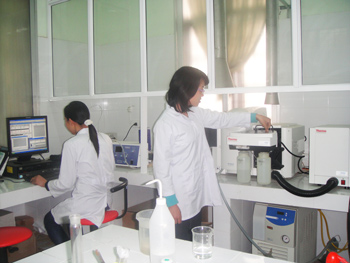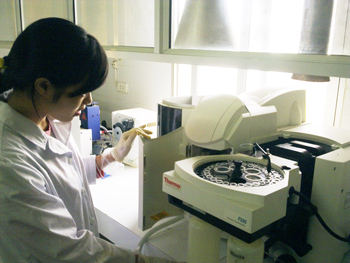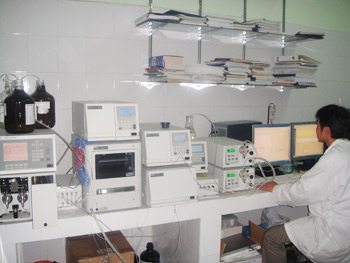Researchers at the U.S. Department of Energy's (DOE) Argonne National Laboratory and the Notre Dame Radiation Laboratory at the University of Notre Dame used ultrafast spectroscopy to see what happens at the subatomic level during the very first stage of photosynthesis. "If you think of photosynthesis as a marathon, we're getting a snapshot of what a runner looks like just as he leaves the blocks," said Argonne biochemist David Tiede. "We're seeing the potential for a much more fundamental interaction than a lot of people previously considered."
While different species of plants, algae and bacteria have evolved a variety of different mechanisms to harvest light energy, they all share a feature known as a photosynthetic reaction center. Pigments and proteins found in the reaction center help organisms perform the initial stage of energy conversion.
These pigment molecules, or chromophores, are responsible for absorbing the energy carried by incoming light. After a photon hits the cell, it excites one of the electrons inside the chromophore. As they observed the initial step of the process, Argonne scientists saw something no one had observed before: a single photon appeared to excite different chromophores simultaneously.
"The behavior we were able to see at these very fast time scales implies a much more sophisticated mixing of electronic states," Tiede said. "It shows us that high-level biological systems could be tapped into very fundamental physics in a way that didn't seem likely or even possible."
The quantum effects observed in the course of the experiment hint that the natural light-harvesting processes involved in photosynthesis may be more efficient than previously indicated by classical biophysics, said chemist Gary Wiederrecht of Argonne's Center for Nanoscale Materials. "It leaves us wondering: how did Mother Nature create this incredibly elegant solution?" he said.
The result of the study could significantly influence efforts by chemists and nanoscientists to create artificial materials and devices that can imitate natural photosynthetic systems. Researchers still have a long way to go before they will be able to create devices that match the light harvesting efficiency of a plant.
One reason for this shortcoming, Tiede explained, is that artificial photosynthesis experiments have not been able to replicate the molecular matrix that contains the chromophores. "The level that we are at with artificial photosynthesis is that we can make the pigments and stick them together, but we cannot duplicate any of the external environment," he said. "The next step is to build in this framework, and then these kinds of quantum effects may become more apparent."
Because the moment when the quantum effect occurs is so short-lived -- less than a trillionth of a second -- scientists will have a hard time ascertaining biological and physical rationales for their existence in the first place. "It makes us wonder if they are really just there by accident, or if they are telling us something subtle and unique about these materials," Tiede said. "Whatever the case, we're getting at the fundamentals of the first step of energy conversion in photosynthesis."
An article based on the study appeared online in the March 12 issue of the Proceedings of the National Academy of Sciences. The research was supported by the DOE Office of Science.


 English
English Vietnamese
Vietnamese
